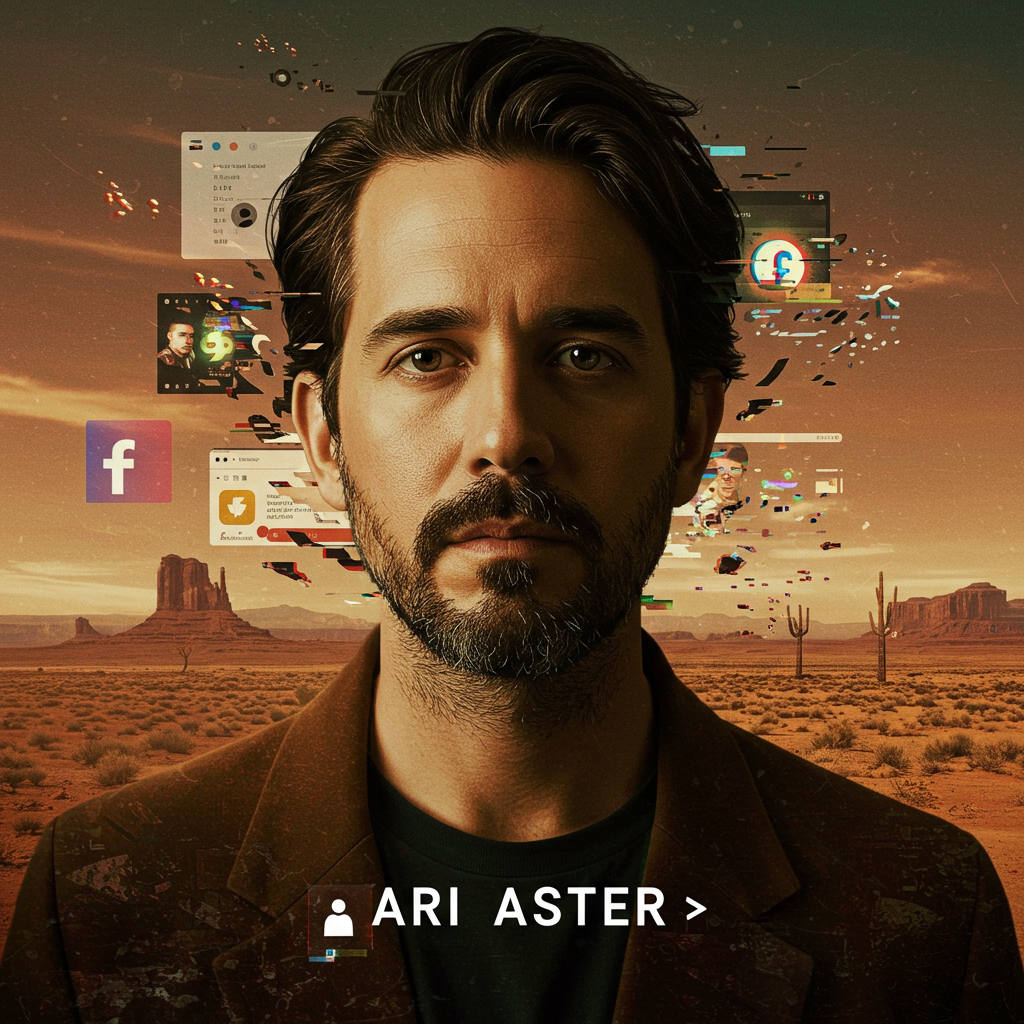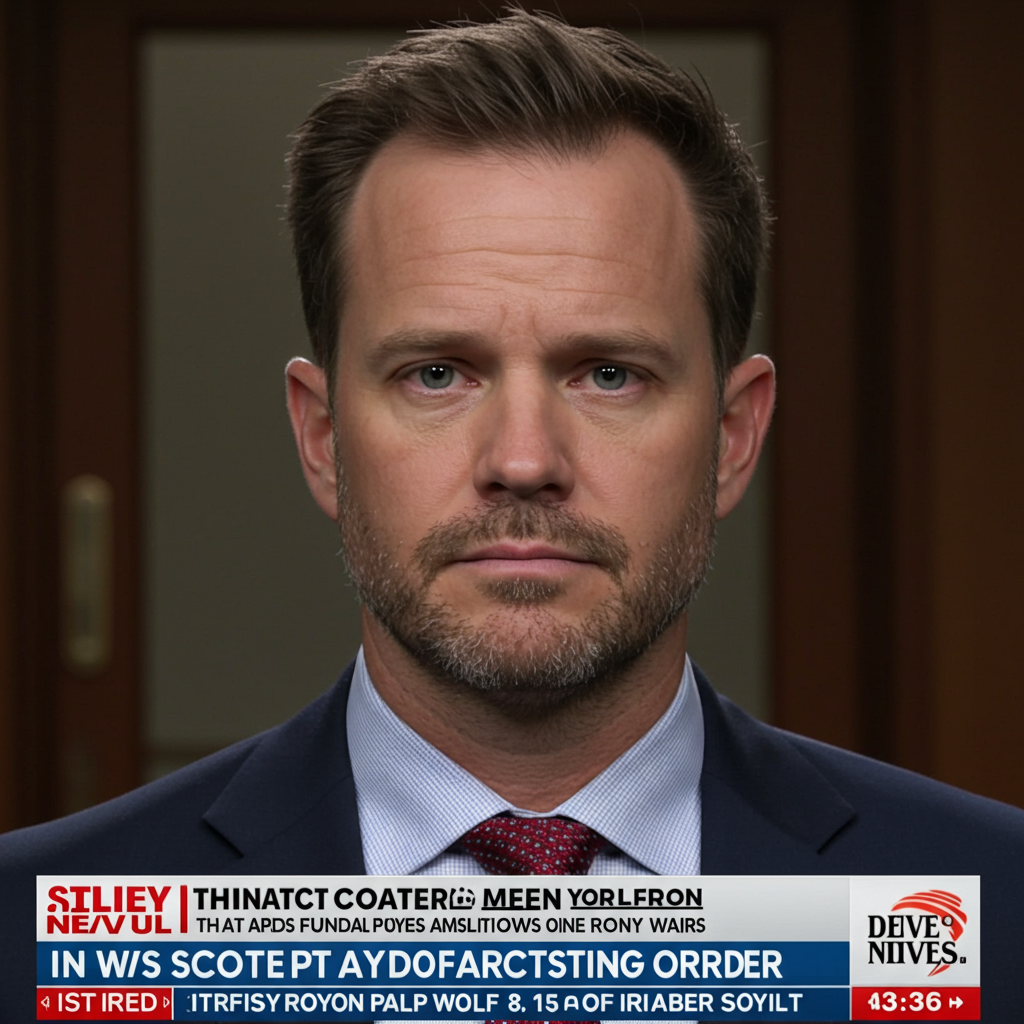In an increasingly fractured digital landscape, acclaimed director Ari Aster — known for his unsettling cinematic ventures like Hereditary and Midsommar — returns with Eddington, a modern Western that plunges audiences into the disorienting chaos of our internet-dominated society. This highly anticipated film, which began hitting theaters on July 18, critically examines the profound and often volatile impact of social media, artificial intelligence, and personalized digital realities on contemporary life. Aster, who found himself deeply “agitated” by his own experience “living on Twitter” during the 2020 pandemic and Black Lives Matter protests, channels this discomfort into a provocative narrative. He meticulously crafted Eddington to expose how our online bubbles collide, often with explosive consequences.
The Digital Divide: Social Media’s Fracturing Impact
Eddington unfolds in a small, remote American Southwest town, where the echoes of the 2020 socio-political climate resonate deeply. Aster, a director consistently fascinated by human behavior’s inexplicable and terrifying facets, uses this setting to explore how social media platforms have atomized and polarized society. His characters, often glued to their smartphones – perhaps even utilizing sleek, magnet-attached accessories like MagSafe wallets that enable seamless, constant device interaction – exist within their own meticulously curated online echo chambers. This continuous digital immersion fosters individual “realities” that are increasingly incompatible, leading to profound disconnection.
From Doomscrolling to Deep Dive: Aster’s Research
Aster’s inspiration for Eddington was profoundly personal, rooted in his own pandemic-era “doomscrolling” habits. What began as agitation quickly evolved into intensive research. To authentically portray the internet’s pervasive influence, he meticulously collected content from his own social media timeline, experimented with various algorithms, and even created multiple accounts to understand diverse online experiences. This exhaustive research directly informed the film’s visual language, prominently featuring characters’ Facebook and Twitter feeds. These on-screen glimpses reveal the conspiracy theories, memes, and curated news that subtly, yet powerfully, shape their every decision. The film, starring Joaquin Phoenix as a populist sheriff and Pedro Pascal as a corrupt, liberal incumbent mayor, transforms the classic American Western into a “messy thriller” on the cutting edge of technological progress.
The Atomization of Society: A World Apart
Aster posits that our “dystopian moment” is inextricably linked to the rise of the smartphone and the pervasive notion of “carrying the internet on our person.” Eddington embodies this theory, depicting a world where characters seemingly inhabit parallel realities, unable to bridge political or generational divides. In one particularly poignant scene, a teenage boy’s attempt to articulate his perspective on “rejecting whiteness” is met with genuine shock and confusion from his parents. This disconnect, Aster argues, stems from the modern internet’s profound and perhaps irreversible alteration of human interaction. The director views this technological revolution as “mostly dehumanizing,” leading to a society where individuals are increasingly “unreachable to each other.” This theme extends to the propagation of conspiracy theories, often spread by online podcasters and YouTubers seeking influence and profit. Phoenix’s character, for instance, frequently absorbs baseless claims from an abandoned laptop, which are then regurgitated by his wife or mother-in-law, a disturbing echo of real-world phenomena Aster observed.
AI: The Unseen Crisis “Cooking Up”
Beyond social media’s corrosive effects, Eddington subtly introduces another looming technological specter: artificial intelligence. The film opens with a plot point about the construction of an AI-training data center on the town’s outskirts, a narrative thread that weaves throughout the story, impacting even the mayoral election. While seemingly peripheral, Aster identifies this as the “heart of the film,” representing “another crisis being cooked up” alongside the pandemic. He describes AI with a complex blend of “wonder and fear,” acknowledging its awe-inspiring capabilities while feeling “very disturbed” by its implications.
The Blurring Lines: Art, Reality, and Distrust
Aster warns that AI’s potential for generating hyper-realistic imagery could usher in an “era of total distrust,” potentially rendering “video or audio evidence” obsolete. From an artistic standpoint, he expresses concern that generative AI tools might be “flattening” transcendent art, even while admitting they “democratize” the film industry, opening new possibilities. Interestingly, Aster finds the earlier, more “uncanny” AI imagery—think “12 fingers, bizarre stuff”—more compelling than the increasingly “polished” and thus more “alarming” perfected outputs of current systems. Just as music streaming apps offer highly personalized listening experiences, leading users down individual algorithmic rabbit holes of sound, so too do AI and social media platforms tailor narratives, potentially isolating individuals within their own curated versions of reality, further fueling the “incoherent miasma” Aster sought to capture.
Deconstructing the Provocative Finale
Eddington masterfully maintains its grounded realism for much of its runtime, despite its Coen Brothers-esque “amphetamines” vibe. However, the final act delivers a jarring, intentional pivot. After Joaquin Phoenix’s character commits murder and frames local Black Lives Matter protesters, a plane carrying “actual anti-fascist terrorists” descends upon the town, unleashing an explosive wave of chaos. This abrupt shift from social commentary to a visceral, almost cartoonish, spectacle is a deliberate choice by Aster.
When Conspiracy Becomes Reality: Satire or Warning?
Reality quickly gives way to what Aster describes as “video game logic.” Phoenix’s character navigates the escalating violence like a protagonist in a “Call of Duty or Grand Theft Auto” game, firing machine guns as he’s pursued by faceless figures. Aster explains this finale as the film’s transformation of unhinged conspiracy theories and social media posts into a terrifying, lived reality. It’s an “alt-right fever dream” made manifest, where imagined threats become terrifyingly tangible. As Aster concedes, “The film is about paranoid people, and by the end, it becomes paranoid.” This ending invites varied interpretations: is it biting satire, or a chilling depiction of “what was really happening,” depending on the viewer’s own beliefs and algorithmic biases? The online frenzy surrounding public figures, such as Pedro Pascal’s viral appearance at the Cannes Film Festival – where his casual attire and playful demeanor generated widespread social media adoration, with fans declaring “My new religion is pedro pascal’s arms” – underscores how powerfully digital narratives can reshape perception and create a collective “reality,” albeit a vastly different one than the film’s violent climax.
Searching for the Olive Branch: A Director’s Empathy
Despite his “very strong political stance,” Aster consciously avoided creating a film that intentionally alienates audiences. His ultimate message transcends partisan divides: social media has “broken all of our brains.” He sees his characters not as right or wrong, but as individuals genuinely concerned about the world, perceiving its problems through “different, distorted windows.” Aster’s aim was to provide “as broad a picture of the environment as I could without being dismissive or condescending.” While deeply skeptical that “open, honest dialogue” can occur in our polarized environment, he maintains it is “the only possible way off this path,” prompting the poignant question that underpins Eddington: “what does an olive branch look like in this environment?” The film stands as a genre-bending Western, inflected with modern realism, exploring the isolation born from people living online, which has profoundly contributed to contemporary societal divisions.
Frequently Asked Questions
What core themes does Ari Aster’s ‘Eddington’ explore?
Ari Aster’s Eddington is a modern Western that primarily explores the profound impact of social media and the internet on contemporary society, depicting how personalized digital realities lead to societal atomization and polarization. Set during the 2020 pandemic and BLM protests, the film also subtly integrates themes of artificial intelligence and its potential for distrust, while critically examining how conspiracy theories, amplified online, can manifest into unsettling realities. Aster’s personal experience with “doomscrolling” heavily influenced these central critiques.
How does ‘Eddington’ fit into Ari Aster’s evolving directorial style?
While Ari Aster gained fame for his horror films Hereditary and Midsommar, and the surreal Beau Is Afraid, Eddington represents a significant thematic shift. It moves away from conventional horror elements to focus on human behavior itself as the source of inexplicable terror. The film maintains Aster’s signature unsettling tone but applies it to social commentary, using the Western genre to satirize contemporary societal divisions stemming from online life, rather than supernatural or psychological dread. It demonstrates his continued interest in the human psyche, now filtered through a lens of technological critique.
What is Ari Aster’s message about navigating the internet’s divisive impact, as portrayed in ‘Eddington’?
Ari Aster’s core message in Eddington is that social media has fundamentally “broken all of our brains,” intensifying societal divisions and creating fragmented realities. Despite having a strong political viewpoint, he aimed for an empathetic portrayal, showing characters as genuinely concerned people who simply perceive the world through “distorted windows” shaped by their online experiences. While deeply skeptical of its feasibility, Aster suggests that “open, honest dialogue” is the only path toward reconciliation, implicitly urging viewers to reflect on their own online habits and seek common ground across algorithmic divides.



